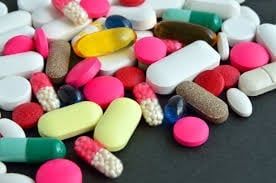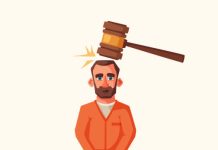We are a nation which takes a lot of medication for mental-health issues. According to IQVia Total Patient Tracker Database for 2020, produced by QuintilesIMS, the largest vendor of U.S. physician prescribing data, 76,940,157 people in the United States take some form of psychiatric medication, meaning approximately 22% of the American population are medicated at some point as a result of a psychiatric diagnosis. Of this number, 6,155,852 are between the ages of 0-17 years of age.
Given a population of 73,039,150 people between the ages of 0-18, this means nearly 10% of all minors receive some form of psychotropic medication. And, although some children do need medication, there is emerging consensus that the problems associated with psychotropic treatments may outweigh the benefits for many children.
Both my research and my personal experiences have led me to conclude there are five major problems associated with psychotropic medications and American youth. First, many of the medications are not nearly as effective as most people believe, at least not used in their current manner. Second, some populations, particularly incarcerated youth and kids in the foster-care system, appear to be medicated disproportionately and potentially unjustifiably.
Third, there is a strange sense of apathy or indifference regarding the meaning behind a diagnosis and the implications this label has for the child or teen. Fourth, many medications are used in an off-label manner, thus generalizing their applicability to a variety of mental conditions that are not supported by rigorous research. And finally, there are issues of abuse of psychiatric medications by a significant amount of youth.

Psychotropic Medications: Associated Problems
Children are given medication for a wide variety of diagnosis, especially depression, anxiety, and ADHD. And although some of these children undoubtedly need pharmaceutical intervention, recent analysis reveals that the efficacy of psychotropic medication is questionable at best, and counterproductive at worst.
During an interview with Street Spirit in August 2005, investigative journalist and author of Mad in America, Robert Whitaker, stated the following regarding the use of psychiatric medication with children: “All these drugs may curb a target symptom slightly more effectively than a placebo does for a short period of time, say six weeks, but what you find with every class of these psychiatric drugs is a worsening of the target symptom of depression or psychosis or anxiety, over the long term, compared to placebo-treated patients. So even on the target symptoms, there’s greater chronicity and greater severity of symptoms. And you see a fairly significant percentage of patients where new and more severe psychiatric symptoms are triggered by the drug itself.”
Although anecdotal, I have personal experience that corroborates this opinion. One of my son’s friends struggled with depression and anxiety throughout his childhood, leading him to seek psychiatric help at the age of 19. He was put on a variety of antidepressants (SSRIs) to treat his symptomatology. Within a few months, his symptoms got worse, and he was prescribed an antipsychotic medication for his depression.
Not only did his depression not lift, he ended up having a full-blown psychotic episode, resulting in his involuntary hospitalization in a psychiatric ward. When I spoke with his parents, who asked me my opinion, I told them I felt his episode was directly connected to the antipsychotic medication he was taking, not the condition he was being treated for.
In fact, as I worked with this young man, what I noticed is that some of his depression was related to his lack of confidence as a student. As a literacy specialist, I ran a few simple reading assessments, all of which made me hypothesize that he had issues related to phonemic awareness and phonics, along with a resulting decrease of fluency, all of which translates to laborious, and often unsuccessful reading of challenging college level texts.
I asked his parents to have him tested through a reputable reading intervention organization, and my hypothesis was confirmed. After some significant intervention, and slowly weaning himself from medication, he is now doing better in his college courses. He also has not, to date, had another psychotic episode.
There is a growing concern among psychiatric professionals about the negative impact these kinds of drugs have on our youth. Peter R. Breggin M.D., a Harvard-trained psychiatrist and former consultant at NIMH who has been called “The Conscience of Psychiatry” for his many decades of successful efforts to reform the mental health field, has this to say: “‘Antipsychotic’ drugs such as Risperdal, Zyprexa, Seroquel and Geodon are used literally to chemically lobotomize millions of adults and children because the resulting apathy and indifference are seen as an improvement over their previously distressed and distressing state of mind or behavior.”
Steven Hollon, PhD, a psychology professor at Vanderbilt University who has conducted extensive research on the effectiveness of antidepressants, agrees with Breggin’s perspective, stating, “I would say at least half the folks who are being treated with antidepressants aren’t benefiting from the active pharmacological effects of the drugs themselves but from a placebo effect. If people knew more, I think they would be a little less likely to go down the medication path than the psychosocial treatment path.”
Many children end up being prescribed psychotropic medication because of issues in school. In a Webmd article titled Are Schools Pushing Ritalin?, treasurer of the American Psychiatric Association and University of Vermont psychiatry professor, David Fassler, M.D., points out that “good quality mental health care should involve a one- to two-hour ‘comprehensive assessment’ of a child,” but “most kids with ADHD are not seeing psychiatrists, or indeed any mental health professionals,” but instead that “kids are often prescribed psychiatric drugs by family doctors and pediatricians, who lack a full background in other mental health treatments.”
Underneath the issues of efficacy is an even more pressing problem, which is that depression and anxiety are often just manifestations of deeper-seated emotional issues, sometimes the result of trauma and repeated stress. As Nicole Beurkens, a licensed clinical psychologist with advanced degrees in psychology, education, and nutrition, writes, “Even in the best of circumstances – when medication helps reduce symptoms – it does not solve the underlying problems. The reality is that many school-age children take medication that does very little to resolve their symptoms. There are more children than ever before on prescription psychiatric medications, and yet we have an ever-increasing number of students experiencing difficulties with learning, socialization, and behavior in school. If medication was the solution, these problems would have been solved long ago.”
Psychotropic Medications and Schools
This is a particularly acute issue in juvenile correctional facilities. Again, I have personal experience regarding this matter, this time, firsthand. As an education consultant in my former career, I participated in a two-year grant by working with teachers and students in the school of a juvenile correctional center. (Just so we’re clear, I was not working at a school where incarcerated youth were attending. The school was in this prison; the classrooms were merely bleak cells inside an even bleaker setting.)
After a few visits, I noticed the students in the morning classes were often zombie-like in appearance and behavior. Many slept through the entire 90-minute period, while others barely participated. Some sketched disturbing images on paper where they were supposed to complete an assignment. Few paid attention even briefly.
After inquiring with the school psychologist, I discovered that this was not merely teenage lethargy or indifference, not even just the sullen behaviors associated with youth at such facilities. Rather, as the psychologist explained, the kids were simply strung out on a panoply of prescription medications for a variety of mental health problems, everything from ADHD, to depression and anxiety, PTSD, and the ubiquitous seemingly catch-all diagnosis, oppositional defiant disorder, the students had been medicated into a zombie like state.
Unfortunately, I could not uncover significant data relating to psychotropic medication at juvenile detention facilities.
However, the article Mental Health Care in Juvenile Detention Facilities: A Review did state that “ . . .two recent surveys inside juvenile facilities in Pennsylvania and Oregon indicate that the use of such medications is not uncommon. In Pennsylvania, detention center directors indicated that there were at least some juveniles in every facility who were taking psychotropic medication at the time of their admission, and at the smaller facilities the rate was as high as 40 to 50 percent. In the 2002 Mental Health Gap Survey in Oregon, of the female incarcerated juvenile offenders with a diagnosed psychiatric disorder, 72 percent were receiving medication as part of the treatment regimen, compared with 54 percent of males with such diagnoses.”
Whether these situations are generalizable to all juvenile correctional centers remains open to investigation. Nonetheless, my suspicion is that this data describes common scenarios for these youth.
Psychotropic Medications and Foster Care Facilities
There are similar issues with regard to children in the foster-care system.
A recent article in the San Jose Mercury News claims, “Psych meds are the norm in group homes for troubled kids: More than half of the foster kids who live in California’s residential group homes — and as many as 100 percent in some counties with very small numbers in group homes — are authorized by juvenile courts to receive psychotropic drugs. These homes shelter some of the most troubled foster kids, about 3,800 annually, many of whom the system has been unable to place with families. Health care professionals say children are being medicated to sleep to keep them manageable. In these group homes, foster children who refuse medications are often punished, losing basic privileges such as visiting siblings or simply going outdoors.”
Unfortunately, this cruel indifference is not limited to youth correctional or foster-care facilities, but have broader implications for all children who receive a diagnosis and the concomitant psychotropic medications. Child psychiatrist Tony Stanton examined clinical records of children who had been diagnosed with a psychological disorder and then received psychotropic medications.
His analysis, captured in the book Drugging Our Children: How Profiteers Are Pushing Antipsychotics on Our Youngest, and What We Can Do to Stop It states the following: “One of the first things we observed in the records sent to us was a death of curiosity. This was due, in part, to the rush to impose a diagnostic label. Once the diagnosis was applied, curiosity was no longer necessary. The goal had been reached: the child’s behaviors and symptoms were placed in their proper category. In the records sent to us, we saw the repeated implication that there was nothing left to describe or discover. In particular, the child’s living connections with caretakers and their history had become irrelevant.”
Some people go as far as calling this almost casual diagnosis and prescription dynamic a form of child abuse. Breggin is blunt about this matter:
“Science and medicine have so successfully rationalized and justified our society’s most devastating and pervasive form of child abuse that it remains almost wholly unacknowledged, though it is known to every sentient adult and to most children. Probably every adult and half-grown child in America knows and can identify at least one child who is the victim of this abuse. Those who teach, coach, minister to or otherwise serve children may know dozens or even hundreds of children who are victims of the new child abuse. Our society’s particular form of child abuse is the psychiatric diagnosing and drugging of our children.”
Underneath this phenomenon is something even more disturbing, calling into question the very science behind the medications themselves.
The researchers Craig A Macneil, et al. write “In reality, however, diagnosis alone may tell us little about causation of a psychiatric disorder. Diagnosis may also instruct us poorly about which form of intervention we should undertake, and offers no information about the person’s experience of their disorder.” Adena B. Meyers and Laura E. Berk from the Department of Psychology at Illinois State University echo this belief: “Little attention is paid to the many risk and protective factors that may influence children’s trajectories over time. Instead, there is a tendency to reify diagnostic labels while losing sight of their hypothetical nature. This may create the erroneous impression that a tangible disease entity with known causes, processes, and treatment mechanisms permanently resides within each affected child.
This disconnect between hypothetical models and actual kids with psychological and emotional problems prevents many kids from getting the psychological therapies and counseling they need to overcome their cognitive and behavioral issues. In other words, these children have trauma stories to share, explore, and eventually process in a supportive nurturing environment, but that environment is often short-circuited by pharmaceutical intervention.
Dr. Gold frames this in stark terms, saying “. . . many children who are similarly diagnosed with psychiatric illness and medicated with psychiatric drugs have trauma in their history. The CDC sponsored ACES (Adverse Childhood Experiences) Study offers extensive evidence that a range adverse childhood experiences including not only frank abuse and neglect, but also parental mental illness, separation and divorce, substance abuse, and domestic violence are highly associated with a range of negative outcomes in both physical and mental health.”
Psychotropic Medications and Off-Label Prescribing
Another factor that has led to an increase, and a possible misuse of psychotropic medications is the practice of prescribing in an “off label” manner, which according to Webmd.com means “the medication is being used in a manner not specified in the FDA’s approved packaging label, or insert.” Off-label prescribing is not necessarily a bad practice, but with psychiatric medications, it may be creating more problems than are currently recognized or understood.
In an analysis by The National Center for Biotechnology Information, a subsidiary of the National Institutes of Health, researchers Shaheen E Lakhan and Gareth E Hagger-Johnson found that “Despite the narrow range of situations in which prescriptions can be supported by safety and efficacy data, drugs are prescribed for an increasing range of disorders and for increasingly younger patients.” The authors state,” We have seen a large increase in prescriptions for antipsychotic drug use, not accompanied by any parallel rise in the prevalence of psychotic illnesses.”
Allen Frances, former chair of psychiatry at Duke University School of Medicine, and lead author of the task force that wrote the DSM-IV, psychiatry’s diagnostic bible, stated that “[A]ntipsychotics are overused, overpriced and oversold,” adding they are being used “promiscuously, recklessly,” in a manner that puts children at risk of a host of serious side effects such as “ rapid weight gain — 40 pounds is not uncommon — Type 2 diabetes, breast development in boys, irreversible facial tics and, among the elderly, an increased risk of death.”
This is an alarming trend, and is especially concerning regarding the use of antipsychotic medications, particularly a group of antipsychotic drugs known as “atypical” antipsychotic medications. The emergence of off-label uses of antipsychotics has a dark and troubling past.
Investigative journalist Evelyn Pringe writes, “The path to child drugging in the US started with providing adolescents with stimulants for ADHD in the early 80s. That was followed by Prozac in the late 80s, and in the mid-90s drug companies started claiming that ADHD kids really had bipolar disorder, coinciding with the marketing of epilepsy drugs as ‘mood stabilizers’ and the arrival of the new atypical antipsychotics.”
Far from diminishing, this path is branching out in a potentially dangerous manner. As reported by NBC News, “. . . these days atypical antipsychotics — the most popular are Seroquel, Zyprexa and Abilify — are being prescribed by psychiatrists and primary-care doctors to treat a panoply of conditions for which they have not been approved, including anxiety, attention-deficit disorder, sleep difficulties, behavioral problems in toddlers and dementia.”
Jacqueline A. Sparks, and Barry L. Duncan, both licensed psychologists, make no bones about their perspective regarding the use of antipsychotics on children: “When the evidence is explored, no reasonable scientist or practitioner would come down on the side of a favorable risk/benefit profile for pediatric use of antipsychotics.”
Breggin points out an even more sinister aspect, the lack of actual consent that occurs because of the mental impairment created by taking the drug itself: “Most consumers of psychiatric drugs do not realize how much these chemical agents disrupt the function of the brain and mind. As a result, their treatment in effect becomes involuntary. Many other adults are physically forced to use these drugs in hospitals and even under outpatient commitment that allows for enforced drugging in the home. Because children cannot control their lives, or understand the implications of taking drugs, they are always involuntary participants in these brain-disabling treatments. Our society needs to stop forcing psychoactive drugs on its citizens, young and old.”
Psychotropic Medications and Abuse
To make matters worse, the over prescribing of psychotropic medications means they are, like any other drug, rife for abuse. A recent study published in U.S. News and World Report “…found that, overall, 35% of young people (aged 12 to 25) said they had taken a prescribed psychoactive drug in the past year, and 31% of those said they had misused that drug. While opioids were the most commonly prescribed drug, misuse of stimulants and tranquilizers was higher.” The investigators of the study “ found that one in 10 participants took at least two prescribed psychoactive drugs, and 58% abused one of them. Also, 87% said they used another substance, such as alcohol, cigarettes, cigars, marijuana, cocaine, heroin, inhalants or hallucinogens,” putting them even more at risk of problems. In fact, “nearly 12% of the 18- to 25-year-olds reported serious psychological problems, which were tied to misuse of every psychoactive drug the researchers looked at in the study.”
There are, of course, those that defend the current use of psychotropic medications with regard to treating children. Ryan Sultan, M.D., a child psychiatrist and researcher at Columbia University Irving Medical Center led a study that concluded: “Our results show that, at a population level, prescriptions of stimulants and antidepressant medications for children and adolescents do not appear to be prescribed at rates higher than the known rates for psychiatric conditions they are designed to treat. These findings are inconsistent with the perception that children and adolescents are being overprescribed.”
But this reasoning is tautological in nature because the assumption is that it is appropriate to prescribe the medication in the first place. Graham C. L. Davey, Ph.D. a Professor of Psychology at the University of Sussex, UK, warns “[P]prescribing drugs at the onset of a mental health problem perpetuates a medical model of mental health that may lead many sufferers to believe their recovery is now out of their hands and in the hands of medical experts.” The bottom line is that there is a strong potential for disempowering the patient because the underlying approach is something that is “done to people,” rather than “with” people.
Let me conclude with a note of caution. I am in no way saying that all psychotropic medications are bad, nor that they have no role in treatment of psychiatric disorders. I am pleading, however, that we take a serious and sober look at the frequency and the context in which we prescribe these medications, and that we also ensure that children receive the cognitive therapy and emotional counseling they need to deal with their traumas.
Dr. Arredondo, MD, a psychotherapist, neuropsychiatrist, and neuropsychopharmacology consultant, offers these words of wisdom: “The first line treatment not another medication. It is to understand, to listen to the child, to ask, ‘what’s going on, why are you sad in this way?’”
At Newsweed.com, we adhere to three simple principles: truth, balance, and relatability. Our articles, podcasts, and videos strive to present content in an accurate, fair, yet compelling and timely manner. We avoid pushing personal or ideological agendas because our only agenda is creating quality content for our audience, whom we are here to serve. That is why our motto is ”Rolling with the times, straining for the truth.”
Your opinion matters. Please share your thoughts in our survey so that Newsweed can better serve you.
Charles Bukowski, the Los Angeles beat poet that captured the depravity of American urban life once said, “There is something about writing poetry that brings a man close to the cliff’s edge.”
Newsweed is proud to stand in solidarity and offer you a chance to get close to the cliff’s edge with our first Power of Poetry Contest. Are you a budding bard, a versatile versifier, a rhyming regaler? Do you march to the beat of iambic pentameter, or flow like a river with free verse? If so, here’s your opportunity to put your mad poetic chops to the test. Enter our poetry contest for bragging rights and an opportunity to win some cash!






